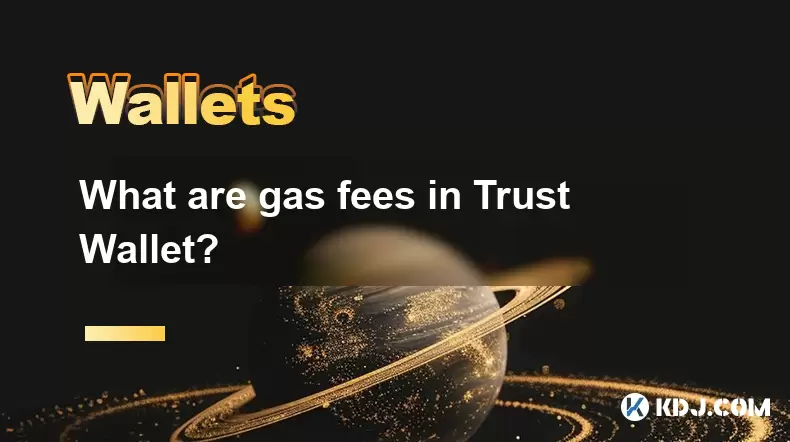-
 Bitcoin
Bitcoin $114400
1.32% -
 Ethereum
Ethereum $3499
2.20% -
 XRP
XRP $2.922
4.26% -
 Tether USDt
Tether USDt $0.0000
0.03% -
 BNB
BNB $752.6
1.53% -
 Solana
Solana $161.8
1.64% -
 USDC
USDC $0.9999
0.01% -
 TRON
TRON $0.3267
1.32% -
 Dogecoin
Dogecoin $0.1991
3.02% -
 Cardano
Cardano $0.7251
3.29% -
 Hyperliquid
Hyperliquid $38.32
3.36% -
 Stellar
Stellar $0.3972
7.58% -
 Sui
Sui $3.437
2.74% -
 Chainlink
Chainlink $16.29
3.65% -
 Bitcoin Cash
Bitcoin Cash $545.3
3.70% -
 Hedera
Hedera $0.2482
7.49% -
 Ethena USDe
Ethena USDe $1.001
0.03% -
 Avalanche
Avalanche $21.40
2.02% -
 Toncoin
Toncoin $3.579
1.56% -
 Litecoin
Litecoin $109.3
2.20% -
 UNUS SED LEO
UNUS SED LEO $8.951
-0.18% -
 Shiba Inu
Shiba Inu $0.00001220
2.75% -
 Polkadot
Polkadot $3.613
2.99% -
 Uniswap
Uniswap $9.173
3.78% -
 Monero
Monero $302.6
2.62% -
 Dai
Dai $0.0000
0.00% -
 Bitget Token
Bitget Token $4.320
1.52% -
 Pepe
Pepe $0.00001048
3.40% -
 Cronos
Cronos $0.1314
4.33% -
 Aave
Aave $259.4
3.54%
How to provide liquidity in Coinbase Wallet?
Earn passive income by adding crypto to liquidity pools on DEXs like Uniswap via Coinbase Wallet; be aware of risks like impermanent loss and smart contract vulnerabilities.
Apr 25, 2025 at 05:36 am

Providing liquidity in Coinbase Wallet is a way to earn passive income by adding your cryptocurrency to liquidity pools on decentralized exchanges (DEXs). This process involves depositing tokens into a smart contract that facilitates trading between different cryptocurrencies. Let's explore how you can get started with providing liquidity using Coinbase Wallet.
Understanding Liquidity Pools
Liquidity pools are essential components of decentralized exchanges. They are pools of tokens locked in a smart contract that provide liquidity for trading pairs. When you add your tokens to a liquidity pool, you enable others to trade those tokens, and in return, you receive a portion of the trading fees generated by the pool.
To provide liquidity, you typically need to deposit an equal value of two tokens that form a trading pair. For example, if you want to provide liquidity for the ETH/USDT pair, you would deposit an equal value of ETH and USDT into the pool.
Choosing a DEX and Trading Pair
Before you can provide liquidity, you need to choose a decentralized exchange that supports liquidity pools. Some popular DEXs include Uniswap, SushiSwap, and PancakeSwap. Each DEX has its own set of trading pairs, so you'll need to select one that offers the pair you're interested in.
Research the trading pair you want to provide liquidity for. Consider factors such as the volume of trades, the stability of the pair, and the potential returns from fees. High-volume pairs may offer more frequent rewards, but they can also be more volatile.
Connecting Coinbase Wallet to a DEX
To start providing liquidity, you'll need to connect your Coinbase Wallet to a DEX. Here's how you can do it:
- Open the Coinbase Wallet app on your mobile device.
- Tap on the 'Browser' tab at the bottom of the screen.
- Navigate to the website of the DEX you've chosen (e.g., app.uniswap.org for Uniswap).
- Once on the DEX website, look for the 'Connect Wallet' button and tap it.
- Select 'Coinbase Wallet' from the list of available wallets.
- If prompted, confirm the connection in the Coinbase Wallet app.
Adding Liquidity to a Pool
Once your wallet is connected, you can add liquidity to a pool. Here's a step-by-step guide:
- Navigate to the 'Pool' or 'Liquidity' section of the DEX.
- Select the trading pair you want to provide liquidity for.
- Enter the amount of each token you want to deposit. The DEX will typically show you the required amount of the second token based on the current price.
- Review the transaction details, including the amount of liquidity tokens you'll receive in return.
- Confirm the transaction in your Coinbase Wallet app. This will involve signing the transaction with your private key.
- Wait for the transaction to be processed on the blockchain. Once completed, you'll see your liquidity tokens in your wallet.
Managing and Removing Liquidity
After adding liquidity, you'll need to manage your position. You can monitor your liquidity tokens and the fees you've earned through the DEX's interface. Here's how to manage and remove liquidity:
- Go to the 'Pool' or 'Liquidity' section of the DEX.
- Find your liquidity position and click on it to view details.
- To remove liquidity, click on the 'Remove' button.
- Enter the amount of liquidity tokens you want to withdraw. You can choose to remove all or a portion of your liquidity.
- Confirm the transaction in your Coinbase Wallet app.
- Wait for the transaction to be processed on the blockchain. Once completed, you'll receive your original tokens back, along with any accumulated fees.
Risks and Considerations
Providing liquidity comes with certain risks that you should be aware of. Impermanent loss is a significant risk, which occurs when the price of the tokens in the pool changes compared to when you deposited them. This can result in a loss of value compared to simply holding the tokens.
Smart contract risk is another factor to consider. Since liquidity pools are managed by smart contracts, there's a risk of bugs or exploits that could lead to loss of funds. Always research the DEX and the specific pool you're considering before adding liquidity.
Volatility of the trading pair can also impact your returns. High volatility can lead to higher fees but also increases the risk of impermanent loss.
Frequently Asked Questions
Q: Can I provide liquidity with any cryptocurrency in Coinbase Wallet?
A: You can provide liquidity with any cryptocurrency supported by the DEX you're using. However, you'll need to ensure that the DEX supports the specific trading pair you want to provide liquidity for.
Q: How often are the fees distributed to liquidity providers?
A: The frequency of fee distribution varies depending on the DEX. Some DEXs distribute fees continuously, while others may have specific intervals or require you to claim your fees manually.
Q: Is it possible to provide liquidity on multiple DEXs at the same time?
A: Yes, you can provide liquidity on multiple DEXs simultaneously. However, you'll need to manage each position separately and be aware of the risks and fees associated with each platform.
Q: What happens if I want to withdraw my liquidity but the pool is empty?
A: If you try to withdraw liquidity from an empty pool, the transaction will fail. You'll need to wait for other users to add liquidity to the pool before you can successfully remove your position.
Disclaimer:info@kdj.com
The information provided is not trading advice. kdj.com does not assume any responsibility for any investments made based on the information provided in this article. Cryptocurrencies are highly volatile and it is highly recommended that you invest with caution after thorough research!
If you believe that the content used on this website infringes your copyright, please contact us immediately (info@kdj.com) and we will delete it promptly.
- Kaspa, HBAR, and Cold Wallet: A New York Minute on Crypto's Latest Moves
- 2025-08-04 09:11:54
- Ethereum Whale Watch: Selling Pressure and Price Volatility
- 2025-08-04 09:11:54
- XRP ETF Mania: Teucrium's Crypto Triumph and the Altcoin Frenzy
- 2025-08-04 09:30:13
- Crypto Wallet Scam: A $900K Loss & What You Need to Know
- 2025-08-04 09:35:13
- Dogecoin's Wild Ride: Elliott Wave, Stochastic RSI, and What's Next, Ya Know?
- 2025-08-04 09:40:12
- Shiba Inu (SHIB), Crypto Investments, and the Meme Coin Evolution: What's the Deal?
- 2025-08-04 09:45:17
Related knowledge

What is a watch-only wallet in Trust Wallet?
Aug 02,2025 at 03:36am
Understanding the Concept of a Watch-Only WalletA watch-only wallet in Trust Wallet allows users to monitor a cryptocurrency address without having ac...

How to fix a stuck pending transaction in Trust Wallet?
Aug 03,2025 at 06:14am
Understanding Why Transactions Get Stuck in Trust WalletWhen using Trust Wallet, users may occasionally encounter a pending transaction that appears t...

What is a multi-coin wallet in Trust Wallet?
Aug 03,2025 at 04:43am
Understanding Multi-Coin Wallets in Trust WalletA multi-coin wallet in Trust Wallet refers to a digital wallet that supports multiple cryptocurrencies...

How to switch between networks in Trust Wallet?
Aug 02,2025 at 12:36pm
Understanding Network Switching in Trust WalletSwitching between networks in Trust Wallet allows users to manage assets across different blockchains s...

How to check my full transaction history on Trust Wallet?
Aug 02,2025 at 09:24am
Understanding Transaction History in Trust WalletTrust Wallet is a widely used non-custodial cryptocurrency wallet that supports a broad range of bloc...

What are gas fees in Trust Wallet?
Aug 04,2025 at 06:14am
Understanding Gas Fees in Trust WalletGas fees in Trust Wallet refer to the transaction costs required to execute operations on a blockchain network. ...

What is a watch-only wallet in Trust Wallet?
Aug 02,2025 at 03:36am
Understanding the Concept of a Watch-Only WalletA watch-only wallet in Trust Wallet allows users to monitor a cryptocurrency address without having ac...

How to fix a stuck pending transaction in Trust Wallet?
Aug 03,2025 at 06:14am
Understanding Why Transactions Get Stuck in Trust WalletWhen using Trust Wallet, users may occasionally encounter a pending transaction that appears t...

What is a multi-coin wallet in Trust Wallet?
Aug 03,2025 at 04:43am
Understanding Multi-Coin Wallets in Trust WalletA multi-coin wallet in Trust Wallet refers to a digital wallet that supports multiple cryptocurrencies...

How to switch between networks in Trust Wallet?
Aug 02,2025 at 12:36pm
Understanding Network Switching in Trust WalletSwitching between networks in Trust Wallet allows users to manage assets across different blockchains s...

How to check my full transaction history on Trust Wallet?
Aug 02,2025 at 09:24am
Understanding Transaction History in Trust WalletTrust Wallet is a widely used non-custodial cryptocurrency wallet that supports a broad range of bloc...

What are gas fees in Trust Wallet?
Aug 04,2025 at 06:14am
Understanding Gas Fees in Trust WalletGas fees in Trust Wallet refer to the transaction costs required to execute operations on a blockchain network. ...
See all articles

























































































